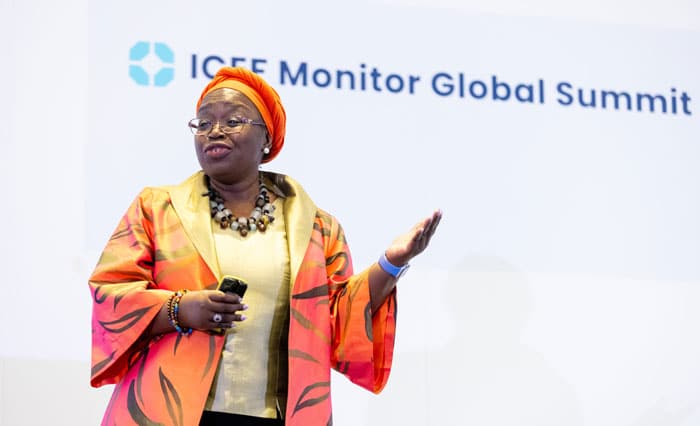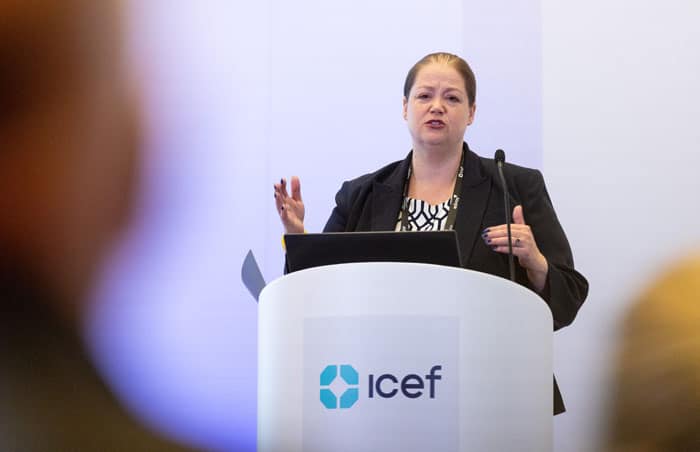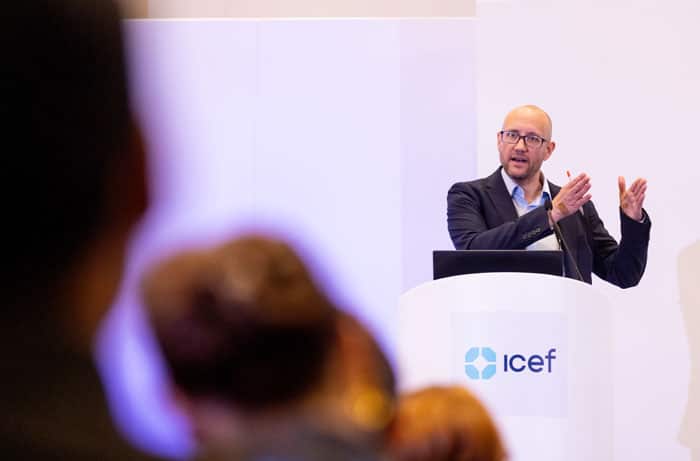The view from here: How the “Big Four” study destinations are adapting in a year of change
- The inaugural ICEF Monitor Global Summit in London featured a series of keynotes from sector leaders in Australia, Canada, the United States, and the United Kingdom
- There were a number of important themes in the keynotes series, including the important links between recruitment and student outcomes, the need to build better links to industry and policy makers, and the importance of data-based insights for decision makers across the sector
All projections point to continuing, strong growth in international student mobility through the rest of this decade and beyond. However, with government policy interventions in major study destinations, changing student preferences, evolving technologies, and heightened competition for talented students, new strategies and approaches around student recruitment are emerging.
“The idea that the US and the [established] foreign market can continue to dominate is a very old framework,” says Dr Fanta Aw, executive director and CEO of NAFSA: Association of International Educators. “There are many emerging countries, and students, policy makers, and others are looking at those countries.”

Through a series of keynote speeches at the inaugural ICEF Monitor Global Summit in London this week, insights from sector leaders in the “Big Four” study destinations – Australia, Canada, the UK, and the US – provided perspectives on the scale of transformation, and strategies that are reshaping student mobility.
While the US has started down a path toward more carefully coordinated action between educators and policy makers, practitioners in Australia, Canada and the UK are responding to new rules that are dampening international student demand.
Those new policy settings arise from an increasingly politicised environment around immigration in many study destinations, one fuelled by growing public concern around access to affordable housing and rising costs of living. The resulting downturns in student numbers across those major destinations has only highlighted how dependant post-secondary systems have become on international student fees.
Larissa Bezo, president and CEO of the Canadian Bureau for International Education (CBIE) says, “When we closed out 2023, we had over a million international students in Canada; that represents about 185% growth over the last 10 years. [That level of enrolment] is significant, it is visible. It certainly not only has a profile on campus, but certainly that visibility also extends to the host communities around our institutions.”

Jamie Arrowsmith, director of Universities UK International, says, “The reason it creates a sort of political and policy problem for us is that funding is seen as the sole driver of global engagement and recruitment. Fundamentally, basing the long-term sustainability of universities – which should be seen as a real strategic asset for the UK – on a pretty dynamic and actually quite volatile funding stream cannot be in our interest, it cannot be in student interest, and it is certainly not in university or community interest.”

This sentiment is echoed in Canada, where the challenge is honing focus on new opportunities to drive strategic international growth.
“The reality is we can no longer afford to base institutions’ survival on how effectively they recruit international students and how many they can recruit,” says Ms Bezo. “What this does is afford us an opportunity to think about how we do this very intentionally, and how we recalibrate such that we can be much more sustainable as we look forward to the future.”
Redoubling efforts to ensure great student experiences is now central to the conversations between CBIE and its members. According to Ms Bezo, those discussions are already delivering innovation and dynamism. International departments are investing in capacity building with partners in-market, more face-to-face working, refreshed training, and immigration support. Student experience divisions are exploring stronger commitments to graduate outcomes, creative approaches to employment progression, and ongoing career development paths both within and outside of Canada.
Across the Big Four, sector leaders and educators have signalled their support for measures to strengthen quality controls and especially to improve the experience of foreign students during their programmes abroad. However, the nearly unanimous view across the sector is that the speed and reach of policy changes introduced to date has also created a great deal of confusion and uncertainty. And that it is that uncertainty, often as much as any new policy settings themselves, that has had the biggest impact on student numbers this year.
This is perhaps felt most urgently in Australia and in Canada. The situation remains very fluid in both countries where changes have often been introduced abruptly, catching the sector off guard or with insufficient detail to allow for proper forward planning.
That rapid change is on full display in Australia at the moment where a new foreign enrolment cap has been proposed for implementation in January 2025. However, the government must pass legislative amendments quickly in order put the cap into force and time is running short. Meanwhile, there are serious questions in play, including at continuing hearings of the Australian Senate, around the process and detail of the proposed limits, and it remains unclear how and when they will be implemented. If they are passed into law as they are currently set out, the projection is for very significant impacts in both the university and VET sectors, with, by some estimates, as many as 300 private training colleges at risk of closure.

"I have been in international education a long time, and this is the biggest own-goal I have ever seen." said Professor Sarah Todd, the vice president (Global) for Griffith University. “We have constantly advocated to the government that if they went ahead with this, that they needed to reinforce the message that we welcome international students. There has been no positive messaging from the government at all, and I think that's a real gap. So we're trying to do it. I wrote personally to all of our recruitment agents last week about our enrolment limit because I know how much confusion there is.”
Universities UK, meanwhile, is working to engage a newly elected Labour government with meaningful dialogue to celebrate international collaboration and mobility exchange as “cornerstones for the sector,” and create a more sustainable model that recognises the multi-faceted benefits of universities.
“As a university community, the thing that we really need from our own governments more than anything else is stability, policy stability is really, really critical,” says Mr Arrowsmith, “But in return for that, we have to ensure that we are sustaining and maintaining very high levels of trust of what we are doing, both in recruitment but also in international collaboration more broadly."
Similarly, Ms Bezo sees a drive in Canada to be realistic about available study opportunities and where they will lead students in the future. “The reality is, is that not every student will be in a position to come into study in Canada,” she adds. “But we want to be realistic about those opportunities and to be very transparent about that pathway even when it comes to post-graduation. I think the other conversation that we're having in the Canadian context is how do we ensure that we're supporting our students in that post study environment.”
“How do we better align Canadian post-secondary education with the Canadian economy and what does that actually look like in terms of the student experience?” she added. “How do we use the challenges that we're currently facing in the international education sector to work together business, our institutions, our communities in terms of developing a strategy to really harness the potential of that global talent, both for the benefit of Canada, but also where we're creating meaningful opportunities for growth for those students.”
For Dr Aw, honesty is fundamental for any US institution considering international recruitment. She says, “We have been very clear with our institutions: do not bring international students if you do not have the structures in place to do right by those students and their families. That is dishonest and it's going to backfire in ways that will be unprecedented.”
Despite international students accounting for a modest 5% of the total US student body, compared with 30%, 24%, and 22% for Canada, Australia, and the UK respectively, the US has no comprehensive international education growth strategy, yet.
Underscoring the vital importance of a sustainable and coordinated approach to student mobility, Dr Aw says, “It is in the national interest to diversify and grow international students in the US, and it is essential that student success is the heart of strategy to achieve that growth.”
To catalyse a national effort, NAFSA is leading a US Success Coalition for International Education. Its 40 members advocate as a group for collaboration, communication, diversification, capacity building, commitment, and expanding employment pathways for international students. These are common threads across the Big Four, despite their distinctions.
That many of our colleagues across these influential study destinations are gritting their teeth and holding on tight to get through some challenging days this year is undeniable. Shifting perceptions, policy instability, funding crises, and geopolitical tensions make for a white-knuckle ride but the outlook from the Big Four illuminates a path that prioritises student outcomes, advocates for stable policy, explores new opportunities, and connects with employers and labour markets to forge a sustainable future for student mobility.
As Ms. Bezo says, “Through the challenges that we're walking through, this kind of fire before us, I think we see a lot of really unique opportunities.”
For additional background, please see:
















